Nature’s Not for Wimps
When the thermometer reads 100 degrees and the heat index is 110, going on an outdoor excursion willingly is bordering on the ridiculous, yes? I mean, who does this?! I do. But — red-faced, dripping with sweat (and not the kinda cute, girly kind of perspiration in a soft row just above the lips, but the in-your-eyes, bra-soaking, rolling-off -your-chin kind of sweat!) — I scored some sweet treasures.
Not five minutes into my foray, I made the acquaintance of this little fellow:
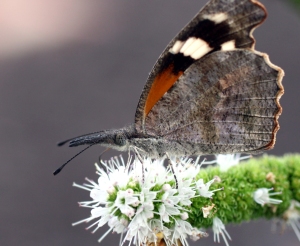 An American Snout-Nose Butterfly. Not all that common in gardens, I understand, except in years when a heavy rain is preceded by drought conditions, and then there’s a baby boom like you wouldn’t believe… no one knows for certain why, though there’s speculation that it’s because the hackberry shrubs, on which the larvae feed, send out so many new shoots that it’s feast time — until it’s not. And when that happens, the Jimmy Durantes of the butterfly world migrate. It’s not an organized, tidy migration like the monarchs manage, but a messy, devil-may-care one, in which no one seems to have a clear idea where they’re going. Presumably they’re going to find more hackberry shrubs. Wherever. And when they do, they fill the skies like snow flurries.
An American Snout-Nose Butterfly. Not all that common in gardens, I understand, except in years when a heavy rain is preceded by drought conditions, and then there’s a baby boom like you wouldn’t believe… no one knows for certain why, though there’s speculation that it’s because the hackberry shrubs, on which the larvae feed, send out so many new shoots that it’s feast time — until it’s not. And when that happens, the Jimmy Durantes of the butterfly world migrate. It’s not an organized, tidy migration like the monarchs manage, but a messy, devil-may-care one, in which no one seems to have a clear idea where they’re going. Presumably they’re going to find more hackberry shrubs. Wherever. And when they do, they fill the skies like snow flurries.
Case-in-point: Tuscon, Arizona, August 9th of 1966… a flock of migrating Snouts blackened the sky, squeezing out the sunlight until the street lights had to be turned on. Auto owners had to scrape thick layers of wings and noses from their windshields and grills that night, which makes me sad. Fortunately, my new S.N. friend was fully intact and cordial, posing for me at various angles: right-side up, up-side down, and mashed vertically against a twig, pretending to be a dead leaf, which I applauded for its comedic value.
This lovely lady was shrub-sharing with the Snout, two kids from different sides of the tracks.
To be honest, by this time I was hoping to bow out and hit the road…Had already been kamakazied by I don’t know HOW many Japanese Beetles, my sweat-soaked skin was becoming a bee magnet, and my ankles were being bitten by something hungry and indiscriminate.
But gardens are a tease, if you haven’t noticed… just about the time you sling that camera bag over your shoulder and fish for your car keys, something whistles or sings, something rustles in the grass, something catches a glint of sun and flings it back in your face, and the stage is set for a new show you’re hell-bent to watch. And so I did, and without complaint.
Had I wimped out on the rest of the walk, THIS is something I would have missed:
And this…
and this…
So okay, I’ll take the sun beating on my head like a mallet, the sting of the nettle, the bite of the chigger…The trade-off is more than a fair one, and I knew going into this that nature is not for wimps.
The Flower Kissers
That’s what the Portuguese call them: Beija-Flor, “flower kisser.” They’re hummingbirds, and I’ve been having a grand time photographing them lately. Okay, well – grand and frustrating time, considering their average flight speed is 25-30 mph and they can do a nose-dive at 60! I’ve been nearly impaled by one a couple of times this past week – they’re oblivious to me once engaged in defending their territory, and they’re ALWAYS defending their territory! Little ruffians, these guys. 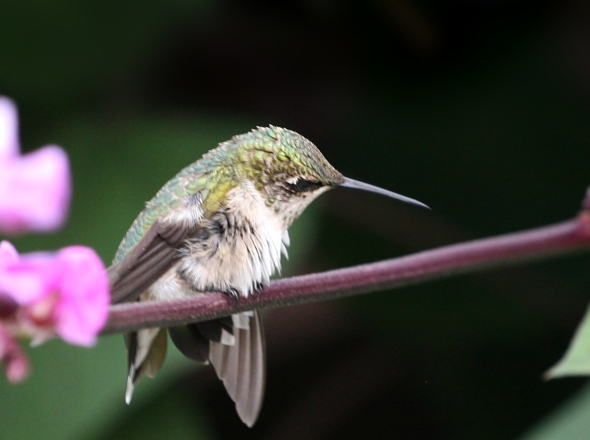 I had known that hummingbirds eat gnats for protein, but was surprised to witness one eating a spider, so I researched it when I got home, and yes, hummers not only eat spiders, but being opportunists, will eat all the insects caught within the web!
I had known that hummingbirds eat gnats for protein, but was surprised to witness one eating a spider, so I researched it when I got home, and yes, hummers not only eat spiders, but being opportunists, will eat all the insects caught within the web!
Another interesting behavior noted was what a friend calls “rain bathing.” I’m not a naturalist or ornithologist, so I was puzzled when I saw a female ruby-throat sliding across wet leaves…I thought she was trying to perch on one, and was losing her grip. Julie Zickefoose (who IS an expert – as well as a talented watercolorist) remarked that she was merely washing her feathers in the drops of water saturating the leaves.
Remember blowing bubbles as a child? (or, if like me, as an adult?) The color we see on hummers is like the color we see on those soap bubbles…not from pigment, but iridiscent, flashing on and off depending upon your angle when viewing them, and where the light source is. 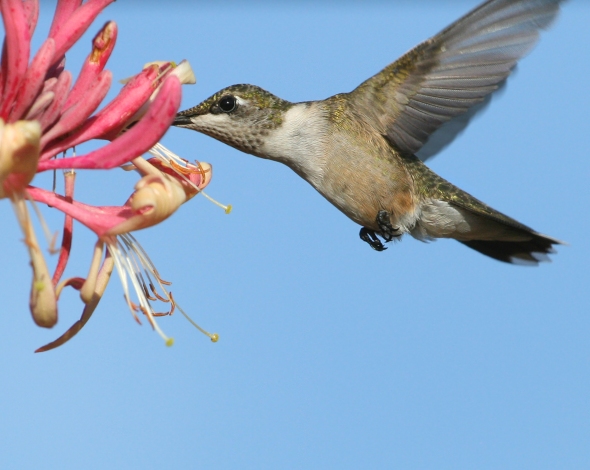 Their forked tongues absorb nectar like a paper towel absorbs water – through tiny capillaries. And their small hearts can beat at an amazing 1200 beats per minute or more! Those that migrate between Canada and Panama travel a distance, roughly, of 2000 miles, which includes a 500 mile journey over the Gulf of Mexico, in non-stop flight. Small and Mighty they are, not at all the fragile things that their appearance presumes.
Their forked tongues absorb nectar like a paper towel absorbs water – through tiny capillaries. And their small hearts can beat at an amazing 1200 beats per minute or more! Those that migrate between Canada and Panama travel a distance, roughly, of 2000 miles, which includes a 500 mile journey over the Gulf of Mexico, in non-stop flight. Small and Mighty they are, not at all the fragile things that their appearance presumes.
In flight, they are marvels of engineering. The wings beat in a figure 8 while hovering, and when flying they can move backwards, forwards, up, down, sideways, or even briefly upside-down! I still long to catch some of that bottoms-up action on camera, but haven’t yet been quick enough.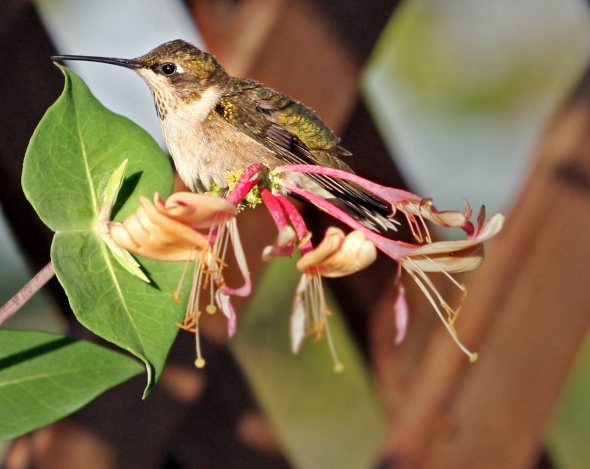

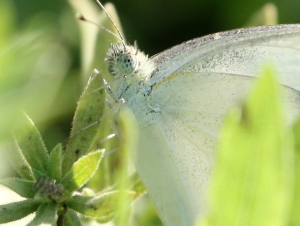

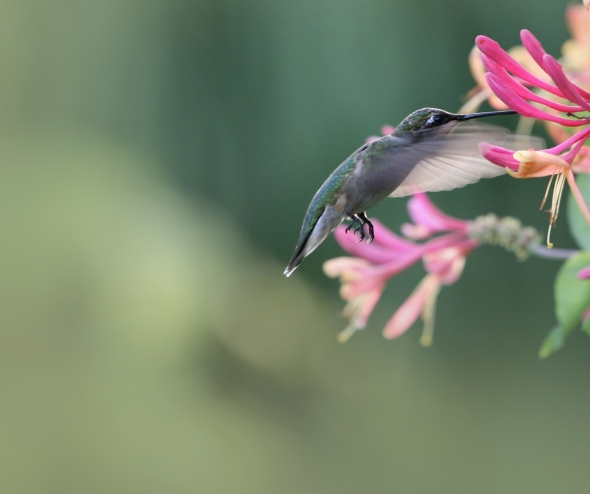
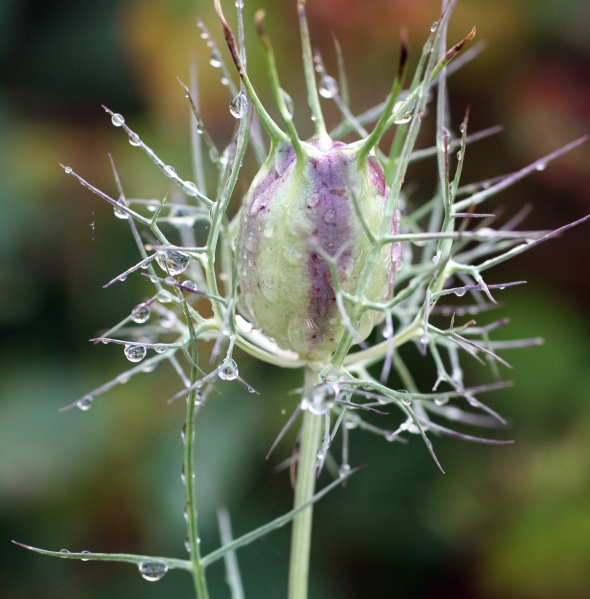

Recent Comments